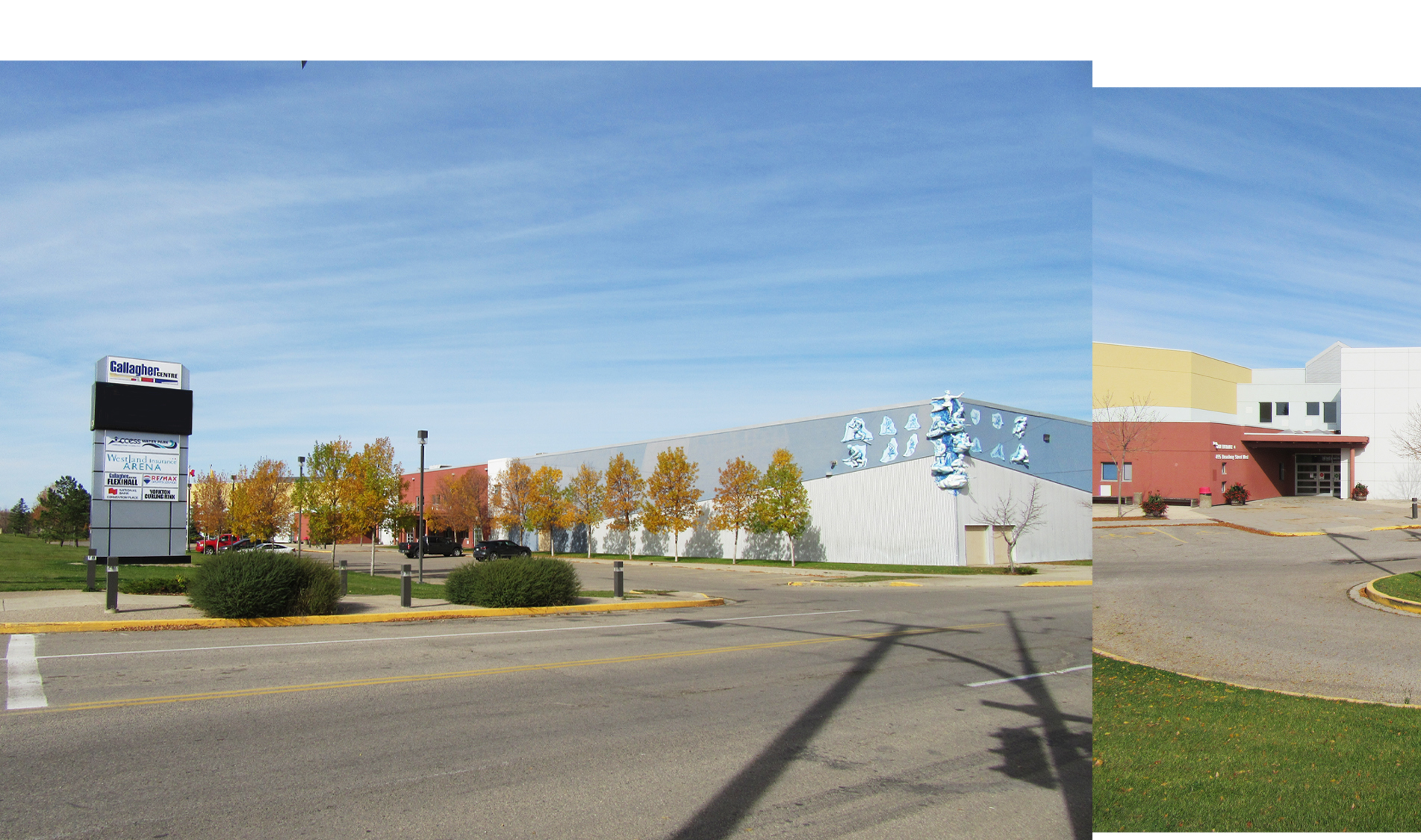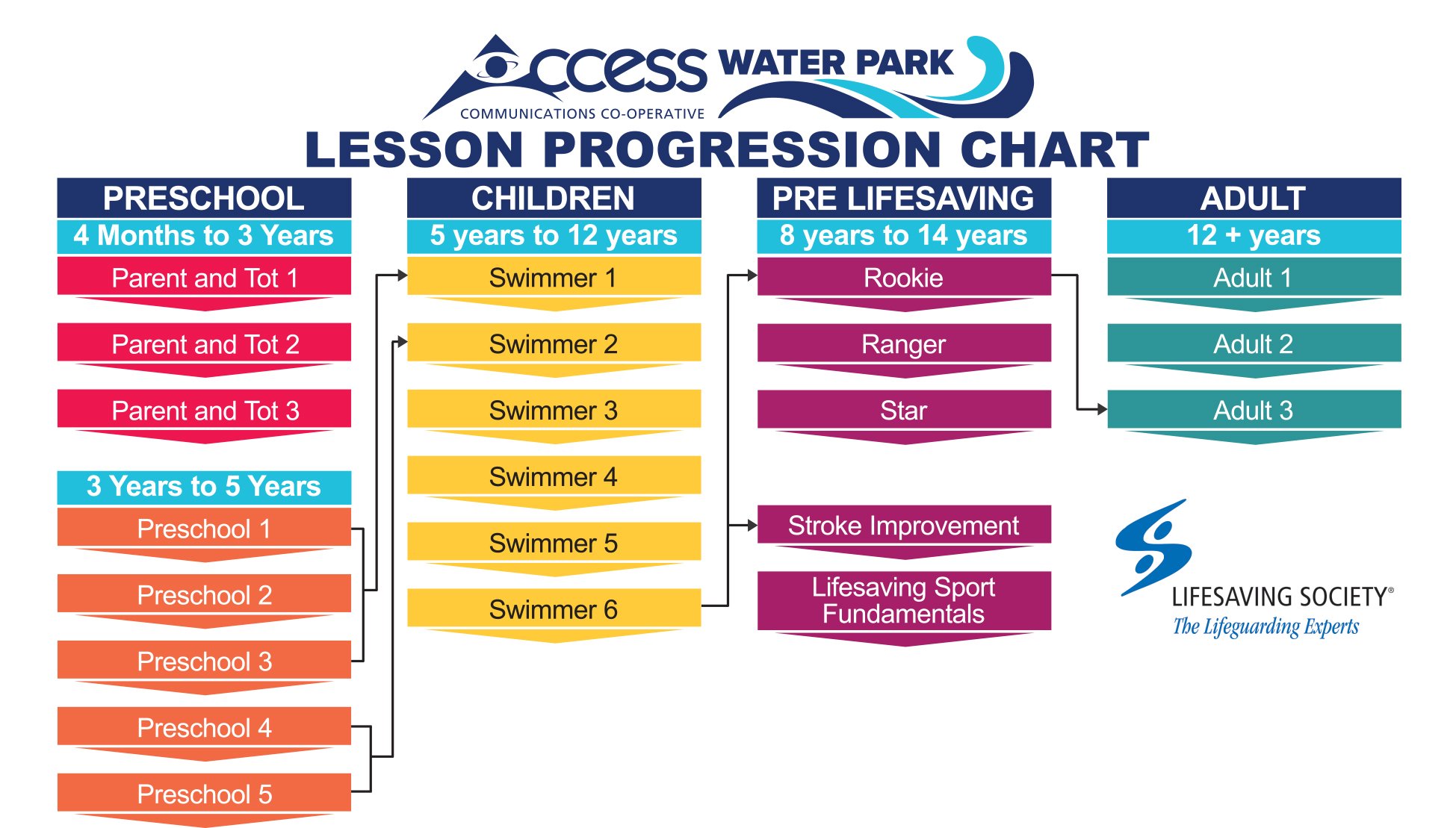Swimming Lessons
Learning to swim opens up a world of recreation opportunities.
The Lifesaving Society's Swim for Life® program teaches swimmers water safety and swimming skills. Learn with your young child in parent and tot classes. Preschoolers and children learn confidence and independence in group classes. Youth build strength and endurance to learn lifesaving skills. Swimming is an important lifelong skill and there is something for everyone.
Our Winter Swimming Lesson session will run from January 6 through March 14.
Spring Session registration for lessons begins March 19, 2024 at 8:00 AM: visit cityofyorkton.perfectmind.com
Register Online Lesson Brochure
Lifesaving Society Swim for Life Programs
Preschool levels – age 4 months to 5 years |
||||||||||||||||
Parent and Tot classes
Preschool classes
Please Note:
|
||||||||||||||||
Children's Levels – Age 5 to 12 years |
||||||||||||||||
Please Note:
|
||||||||||||||||
Youth and Adult Levels – Ages 12 plus |
||||||||||||||||
|
||||||||||||||||
Private lessons |
||||||||||||||||
|
Private lessons are available for swimmers of all ages. Work one-on-one with instructors. The lessons focus on the participants' specific needs and skill level. They can be helpful for swimmers who have repeated a level several times or have trouble in big groups. Speak with the instructor to set goals for the swimmer and lesson. Add an extra swimmer to make a Semi-Private Class. Swimmers in different levels can share a semi-private lesson and should not be more than 1 level difference. To add a second swimmer to semi-private classes, call the Gallagher Centre at 306-786-1740. An extra fee will apply for an additional swimmer. |
||||||||||||||||
Pre-Lifesaving Levels |
||||||||||||||||
Canadian Swim PatrolCanadian Swim Patrol builds on swimming and adds lifesaving skills. They are ideal for children and youth interested in taking aquatic leadership programs.
Lifesaving SportThe Lifesaving Sport Fundamentals program is a recreational introduction to lifesaving sport. This five-level program builds on Swim for Life. The program keeps kids active and gaining new skills. They learn team building, fair play, ethics in sport and personal responsibility. It also provides an introduction to lifesaving and lifeguard training. |
What level is the right level?
The Swim for Life program has something for everyone. The lessons and progressions are designed to work with the way people of different ages learn. If you have taken lessons at a pool that doesn't use the Swim for Life program, look at this comparison chart to see where your past lessons match-up.
Free swimming assessments are available. One of our certified instructors can go in the water with your child and review key skills. If your child hasn't taken a lesson in several sessions an assessment is ideal. Our instructor will identify the best level so that you can register. Please call the Gallagher Centre at 306-786-1740 to book a free assessment with water park staff.
Frequently asked questions (FAQs)
Can I have swimmers in different levels in a private lesson? |
|
You can register a second participant in a private lesson. There can only be 1 level's difference between the swimmers. |
What happens when a lesson is interrupted (power outage, fouling, etc.)? |
|
Our instructors will adapt their lesson to teach items out of the water or in one of the other pools. Disrupted lessons cannot be rescheduled to another date. |
Can I change the date/time of a lesson after I have signed up? |
|
You can switch to swimming class on a different date or time before the lessons start. There is a $10 administrative charge. |
Can I drop out of a class and get my money back? |
|
If you ask to withdraw from a class seven days before it begins, you are eligible for a credit for the value of the course. There is a $10 administrative charge to do this. There are no credits or refunds for requests made less than seven days before the course starts. |
If I miss a class can I get an extra class to make it up? |
|
Make-up classes are not available. |
What should I do if I do not know what level to register in? |
|
Contact us at the water park to schedule a free swimming skill assessment. |
We took swimming lessons in another city and don't know which level to register in, what should we do? |
|
Look over this comparison chart of swimming programs. Contact us at the water park to schedule a free swimming skill assessment. |
What should I do when I arrive at the pool for a lesson? |
|
Check in at guest services so you can go into the change rooms. Get changed and use the washrooms before going out to the deck. Wait on deck for your instructor to call the class. If you are late, the lesson supervisor can help you find your instructor. |
How do I register for a lesson? |
|
You can register online or by calling the Gallagher Centre at 306-786-1740. |
Can I ask for a specific instructor? |
|
You are welcome to ask for a specific instructor for the class you have registered in. We cannot guarantee that the request can be met. |
What should I wear for my swimming lesson? |
|
Everyone should wear clothing designed for swimming. See our guide for appropriate swimwear. Some people choose to wear goggles, ear plugs, swim caps or nose plugs. You can buy these items at guest services, but they are optional. We recommend people with long hair to tie it back while they are in the water. |
Do you provide towels? |
|
The water park does not provide towels |
Are there lifeguards on deck during lessons? |
|
All our instructors are also trained lifeguards. There will also be lifeguards on deck to provide extra support. |
How does somebody learn to become a lifeguard? |
|
Learn about how Aquatic Leadership programs train swimmers to be lifeguards. |












